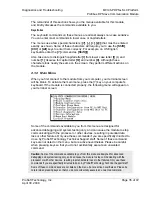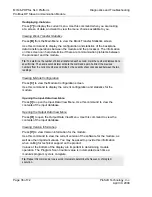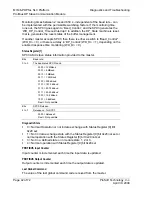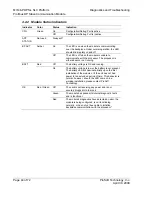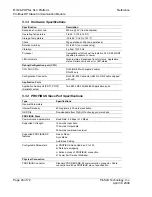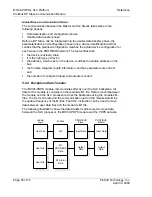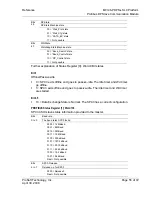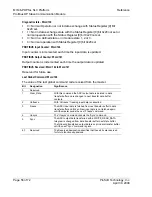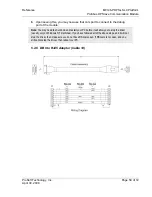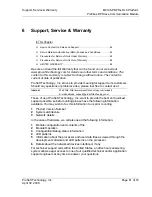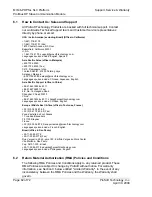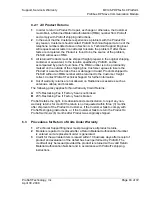
Reference MVI46-PDPS
♦
SLC Platform
Profibus DP Slave Communication Module
ProSoft Technology, Inc.
Page 49 of 72
April 30, 2008
5.2.3 PROFIBUS
DP
Architecture
The PROFIBUS DP network supports multiple master systems with several
slaves.
The following table shows the most important features of PROFIBUS DP:
Standard
EIN 501 70
DIN 19245
Transmission Equipment
(Physical)
EIA RS-485
IEC 1158-2 (through link or coupler)
Fiber Optic Cable (not available)
Transfer Procedure
Half-duplex
Bus Topology
Linear bus with active bus termination
Bus Cable Type
Shielded twisted pair conductors
Connector 9-pin
D-Sub
Number of nodes on the bus
Max: 32 with no repeaters
Max: 125 with 3 repeaters in 4 segments
Bus Access
Two different bus access procedures handle the various communication
requirements for the PROFIBUS DP topology:
Token
Passing
Polling
Token Passing
Token passing ring is the basis for communication between the more complex,
active stations. All stations have the same rights in that a token is passed from
station to station in a logical ring. The token is passed to each station with a
maximum, definable token cycle time. A station is given transmission rights for
the duration of time that it has the token.
Master/Slave Polling
Master/Slave polling guarantees a cyclic, real-time based data exchange
between the station with transmission rights, active station and its subordinates,
passive stations. In this case, the master is able to pass data to the slave and/or
receive data. The services in layer 2 (field-bus data link in ISO-OSI reference
model) organize this communication.
Communication Types
In addition to point-to-point data transfer, the PROFIBUS protocol can also
handle the following types of communication:
Broadcast
communication:
An active node sends an unacknowledged message to all other nodes
(master and slaves)
Multicast communication (control instructions)
An active node sends an unacknowledged message to a group of nodes
(Master and Slaves).

